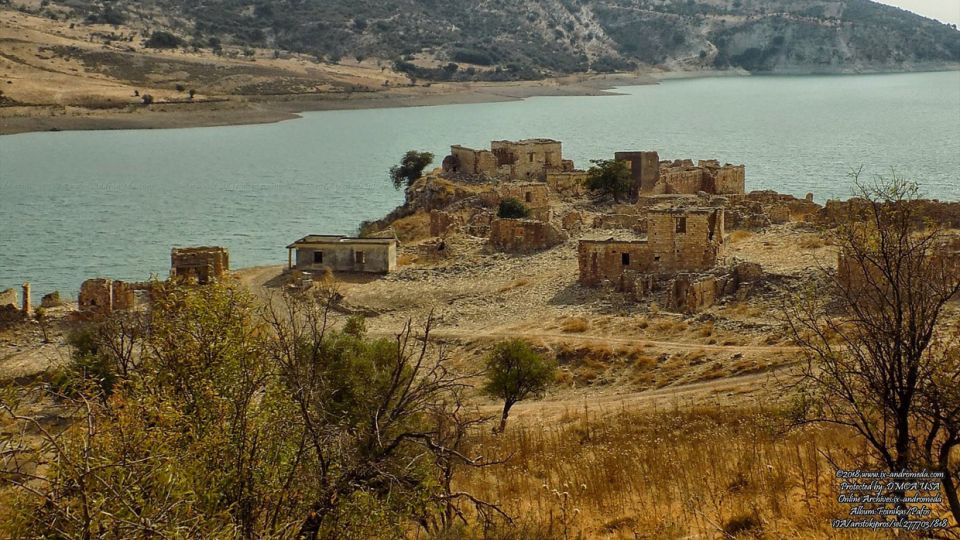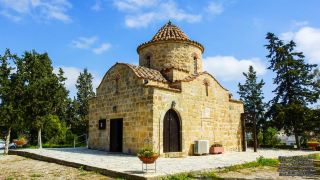It was back in 1191 AD when the small island of Cyprus, was invaded by the massive military force of the King of England, Richard the Lionheart. Without finding any resistance from the Byzantines that held the island, they reached the outskirts of the capital. In the ensuing battle between the invading British and the Byzantines, the latter were defeated and fled. Richard the Lionheart raised his flag on the then Byzantine fortress of Nicosia.
The conqueror made sure to plunder the whole island, before selling it to the poor Knights of Christ and of the Temple of Solomon or as they were also called "Knights Templar."
The Templars, when coming to the island, settled in the Byzantine fortress of Nicosia as headquarters to control the Provinces of Mesaoria. In order to control and govern the provinces of Paphos and Limassol, they founded the superior military command of the Foinikas, in which the then villages, of Foinikas, Kalogiannakia, Anoyira, Plataniskeia and Agia Irini were included.
The Templars chose Foinikas to be the "capital" of their administration because the village was built on the site that was itself an actual, impregnable fortress. It was built on a flat area between the river Xeropotamos and a high, steep slope. The only access to the village was by the river, where a narrow strip of land led you from the depth of the bed to a point south of the village.
Foinikas was built entirely of stone which they took from the adjacent vertical slopes. Its architecture reveals the richness of their tenants. The houses spread out over a large area. The house of the commander of the Knights was built at the highest point, on a rocky location dominating the whole village to the south, west and north and the river valley to the east.
In Foinikas, you will see a kind of architecture which cannot be seen elsewhere in Cyprus. The houses are all identical. The ground floor with its unique entrance, not exceeding two meters in height and it was used to their stall their horses. From there, an internal stone staircase led to the first floor where the utility rooms (storage, kitchen, etc.) and the oven were located. The rooms were separated by vast interior arches and at their junction there was a grommet which, with the help of a rope, they hung a lit lamp for the night.
The body of the oven was at a higher position outside the house and its mouth was inside the house. This architecture is really impressive in terms of functionality.
Every house, in case of attack transformed itself into an impregnable fortress.
The occupation of Cyprus by the Poor Knights of Christ and of the Temple of Solomon is characterized by the toughness they showed towards the indigenous population. They imposed very heavy taxes, which forced the patient, among other qualities, Cypriot people to rebel.
The revolt of the Cypriots led the Templars to return the island to the King of Britain. He searched and found a new buyer who was none other than the French Guy de Lusignan. A new occupation, this time by the Lusignan, begun in Cyprus.
The village of Foinikas continued to "live" until the island΄s independence in 1960. The independence did not bring only good things. It also brought urbanization. Dozens of villages were abandoned and ruined. One of them was Foinikas.
The ruins of the once beautiful village are found northwest of the Asprokremmos dam in Paphos. A few kilometers north of the village of Anarita and just one kilometer south of the village of Nata. Access is very difficult from both directions. It is smoother from Nata but the dirt road passes through the bed of Xeropotamos for 200 meters, which means that it is not accessible in winter. From Anarita it is very difficult and uneven journey, going to a very intense downhill, narrow dirt road which "floats" on the verge of towering cliff that ends in the deep waters of the dam. And this road crosses a small stream which is covered by reeds and wild vegetation.




